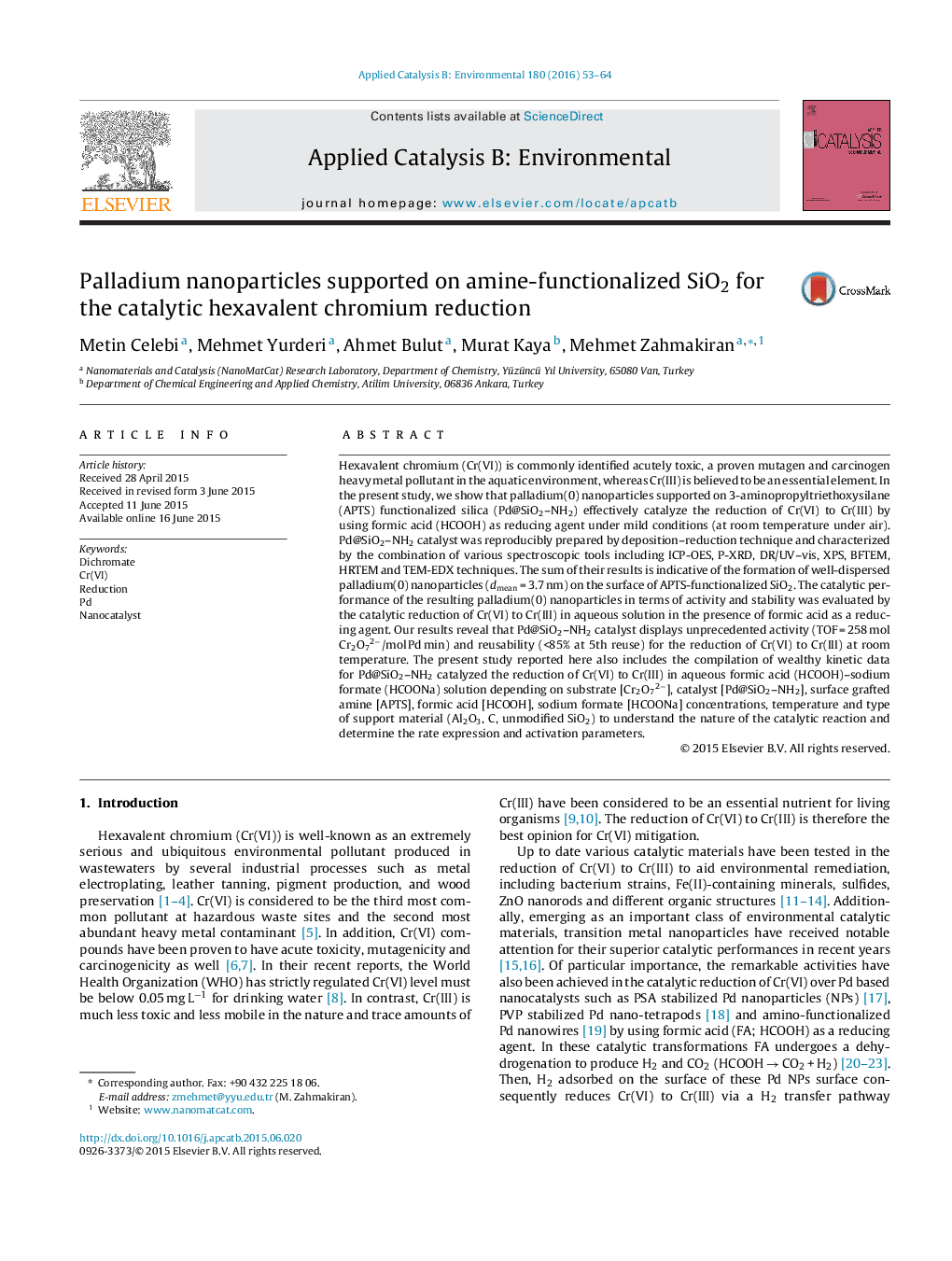| Article ID | Journal | Published Year | Pages | File Type |
|---|---|---|---|---|
| 45220 | Applied Catalysis B: Environmental | 2016 | 12 Pages |
•Pd NPs supported on APTS-functionalized SiO2 support (Pd@SiO2–NH2) were synthesized and characterized.•For the first time, Pd@SiO2–NH2 catalyst was employed in the catalytic reduction of Cr(VI) to Cr(III) by using FA.•Pd@SiO2–NH2 catalyst provides remarkable catalytic performance among all heterogeneous catalysts tested in the same reaction.
Hexavalent chromium (Cr(VI)) is commonly identified acutely toxic, a proven mutagen and carcinogen heavy metal pollutant in the aquatic environment, whereas Cr(III) is believed to be an essential element. In the present study, we show that palladium(0) nanoparticles supported on 3-aminopropyltriethoxysilane (APTS) functionalized silica (Pd@SiO2–NH2) effectively catalyze the reduction of Cr(VI) to Cr(III) by using formic acid (HCOOH) as reducing agent under mild conditions (at room temperature under air). Pd@SiO2–NH2 catalyst was reproducibly prepared by deposition–reduction technique and characterized by the combination of various spectroscopic tools including ICP-OES, P-XRD, DR/UV–vis, XPS, BFTEM, HRTEM and TEM-EDX techniques. The sum of their results is indicative of the formation of well-dispersed palladium(0) nanoparticles (dmean = 3.7 nm) on the surface of APTS-functionalized SiO2. The catalytic performance of the resulting palladium(0) nanoparticles in terms of activity and stability was evaluated by the catalytic reduction of Cr(VI) to Cr(III) in aqueous solution in the presence of formic acid as a reducing agent. Our results reveal that Pd@SiO2–NH2 catalyst displays unprecedented activity (TOF = 258 mol Cr2O72−/mol Pd min) and reusability (<85% at 5th reuse) for the reduction of Cr(VI) to Cr(III) at room temperature. The present study reported here also includes the compilation of wealthy kinetic data for Pd@SiO2–NH2 catalyzed the reduction of Cr(VI) to Cr(III) in aqueous formic acid (HCOOH)–sodium formate (HCOONa) solution depending on substrate [Cr2O72−], catalyst [Pd@SiO2–NH2], surface grafted amine [APTS], formic acid [HCOOH], sodium formate [HCOONa] concentrations, temperature and type of support material (Al2O3, C, unmodified SiO2) to understand the nature of the catalytic reaction and determine the rate expression and activation parameters.
Graphical abstractFigure optionsDownload full-size imageDownload as PowerPoint slide
